Making a brand meaningful
According to the 2015 Meaningful Brands research by Havas, most people would not care if 74% of all brands disappeared for good. This should be a wake-up call for the majority of brands. The marketing landscape is continuously changing and digital technology is developing faster than ever. It will come as no surprise, that some businesses fail to keep up with these trends.
Most of the problems that brands face nowadays result from problems in marketing communication. Many marketers have not updated their strategies to today's consumers who are more demanding in terms of customers service, less loyal to favorite brands and more resistant to traditional marketing messages.
December is usually the time when most companies sum up the whole year and prepare for the upcoming months.
1. Ad blocking will continue to grow
Users that use ad blockers are no longer a small group that you can ignore in your marketing strategy. Between June 2014 and June 2015, the number of active adblock users grew by 41%, reaching 198 million users around the world. In UK alone this number increased by 82% and in US - by 48%. Even though, ad blocking users represent only 6% of word's Internet population, advertisers should be aware of the massive cost of ad blocking that is expected to reach $40 billion by 2016.
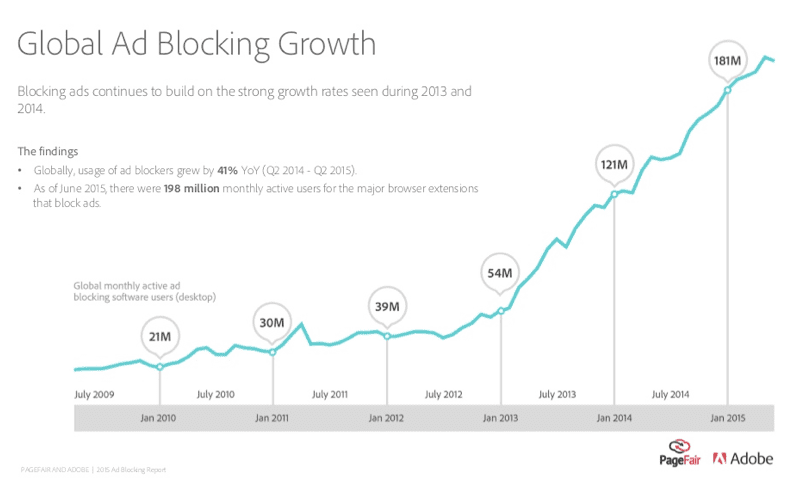
The main reason why Internet users install ad blockers is the fact that most of the personalized ads are irrelevant to them. Advertisers fail to deliver meaningful messages and target them to audiences that might potentially be interested in an offer. This especially concerns young, tech savvy consumers who have innate aversion to traditional media and messages brands try to convey.
For marketers, it means they need to move towards alternative ways of communication. Today, only 6% of Internet population use ad blocking. However, in 5-10 years time, Millenials, who are a significant representation of ad blocking users, will become main target audience for most brands.
2. Marketing communication is all about listening
Social media is a digital reflection of today's consumers' lives. Platforms like Facebook or Twitter are a natural environment, especially for the young users. They spent a massive amount of time there. These digital networks are constantly adjusting to evolving consumers to meet their expectations and make them spend even more time on social media. Social platforms are sources for news, information about friends and entertainment. They let users express themselves, share their experiences and views, interact with others and ask for opinions.
It creates a wide space for brands to step in and communicate with clients and prospects. Users leave lots of information about their interests and preferences. Marketers who do not listen their audiences miss the opportunity to reach out to the most promising leads.
Internet users create over 30,000 mentions with "where can I buy" phrase monthly. Social listening tools enable you to collect such comments in one place and then reach out to prospects. It is one of the most effective channels for generating sales. Leads that you collect with social listening are authentically interested in particular products or services and what's more important these prospects express their demand publicly. If you reply directly to a user who ask for recommendation chances are he or she will settle on your product.
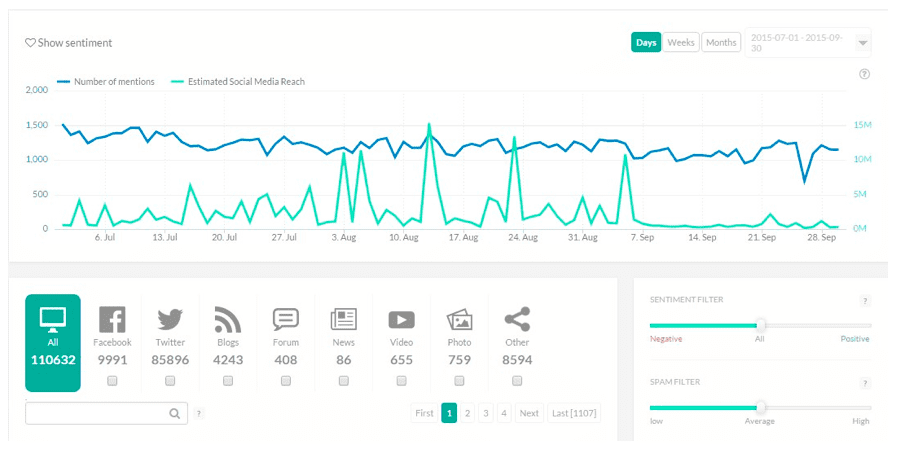
Social listening is not only about generating leads. Brands should also understand its crucial role in brand reputation management and in engaging audiences. Generally, every person with Internet access is now a reporter who forms opinions. What's more, user-generated content is more trustworthy than content from any other medium.
Therefore, companies should not ignore comments that concern themselves, whether they are positive or negative. Interacting with audience is an effective solution to create bond with consumers and alleviate crisis situation.
PlayStation, for example, tracks all social media mentions about the brand or gaming in general and responds to users in real time. Thanks to their social media interactions with community they managed to improve sentiment structure, grow the group of followers and generate bigger buzz about the brand.
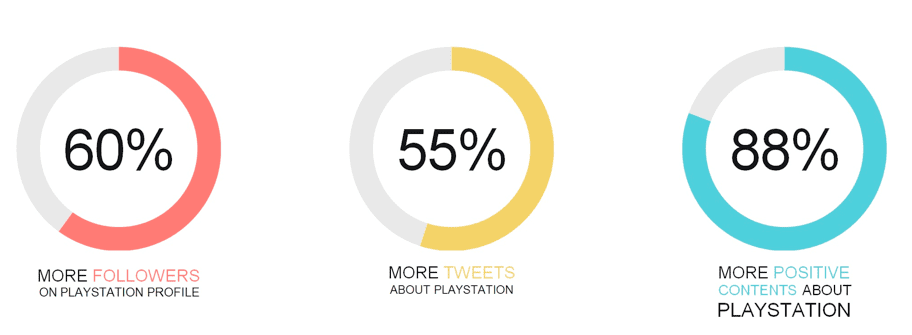
3. Emotional marketing
According to the Brand Storytelling Report 2015 by Headstream, more than a half of consumers are more likely to buy a product in the future if they really love a brand story. People want to hear stories about real humans, stories they can relate to. Relevant stories that speak to consumers make brands meaningful. On top of that, they can go viral, giving brands organic recommendations that are more trustworthy than any other corporate messages. Emotional marketing helps businesses to stand out in the highly competitive market.
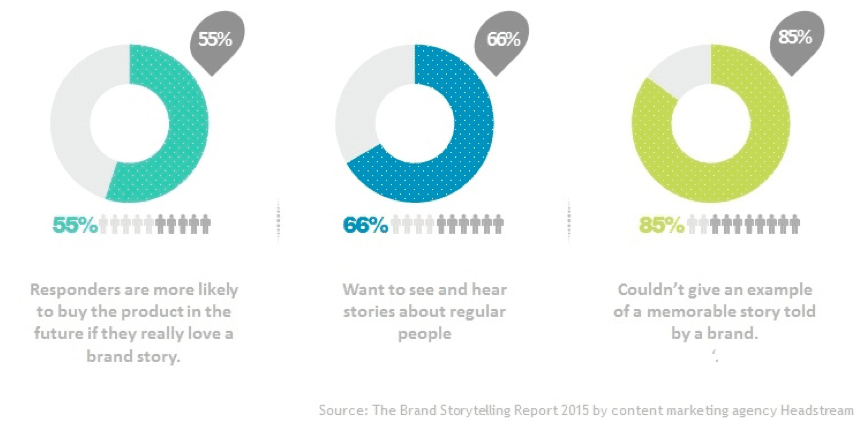
Significant number of brands have already incorporated emotional marketing in their strategy gaining positive feedback from their audiences. Apple poses as a great example. The company does not start its marketing communication with "what", as most of businesses do. Most brands pitch their products beginning with what they have to offer. Apple starts with "why" - the core belief and reason for the company to exist. With such vision they move to how they want to achieve this mission and what methods they are going to use to do it.
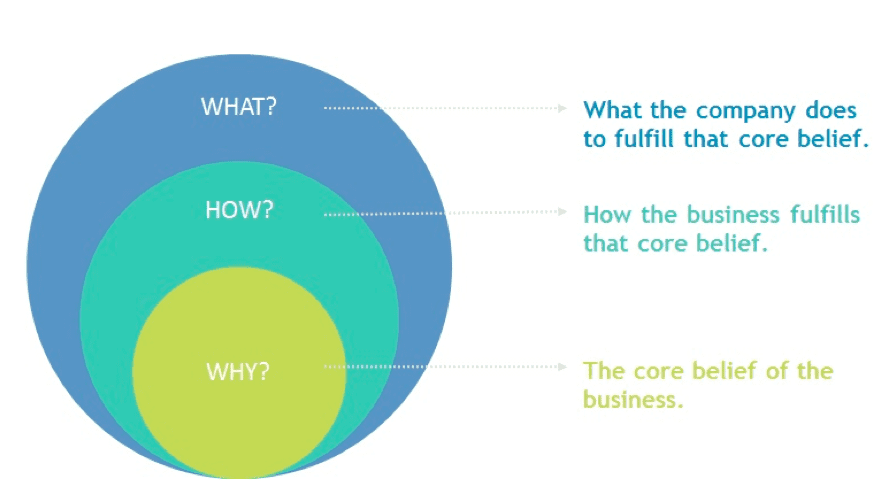
Apple flipped their marketing strategy. They don't sell computers. They offer a way of thinking and a challenge to the status quo, by making their products beautifully designed, simple to use, and user-friendly. It just happen they fulfill this vision by making computers.
Other meaningful brands start with the why as well. Coke doesn't sell soda, they offer happiness, Universal Music doesn't sell songs, they give you emotions and moments. Redefinition of marketing strategy can change the way people perceive a brand and bring them around to its offer.
4. Influencer marketing
Consumers, especially the young ones, often don't trust brands any longer. Corporations no longer have a big impact on customer behavior and their preferences. Traditional advertising is not effective as it used to be a few years back. People use ad blocking and if not, they unconsciously tuning traditional ads out.
That's why Internet users are more willing to trust a favorite blogger rather than a recommendation from a brand. Thus, bloggers and other influencers have the power of shaping consumer opinions. They are more credible to today's audiences.
Word of month has always been a valuable source for customer acquisition and retention. However, with social media development it moved to a different level. Recommendations have no longer one-to-one character. Everyone with Internet access can reach out to broad audiences. If a user happen to be influential on social media, he or she has a powerful weapon of shaping customers opinions in hands.
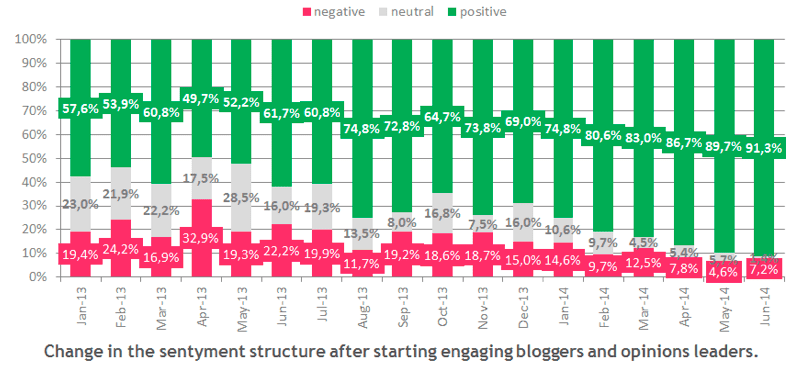
Therefore, more and more brands started to leverage this channel in fixed marketing strategy. Influencer marketing brings measurable results to businesses. For instance, a cosmetic brand managed to significantly improve sentiment structure within 18 months (graph), since they started to cooperate with influencers.
Somersby incorporated influencer marketing in their strategy as well. They have cooperated with bloggers on regular basis for many years. It helped them improve online image and improve sales results.
If you work in marketing you should never stop learning. Follow trends and always listen to your audience. Your clients and prospects is the most valuable brand asset you can ever earn and also a rich source for insights that will help your business to grow.
What other marketing trends will change the way brands communicate? Leave a comment!

Thanks to
Natalia Chrzanowska for sharing their advice and opinions in this post. Natalia Chrzanowska is a Content Manager and an author at corporate blog of
Brand24 You can follow her on
Twitter or connect on
LinkedIn.









 Thanks to
Thanks to 



